Types Of Garden Forks: From Digging To Aerating
Gardening requires the appropriate tools, and forks are one of the essential ones. Here is a comprehensive guide of gardening fork types, types of garden forks available and their applications to enhance your gardening experience and make it more rewarding and pleasurable. This guide explores each variety, their distinct characteristics and effective uses.
Different Types of Garden Forks
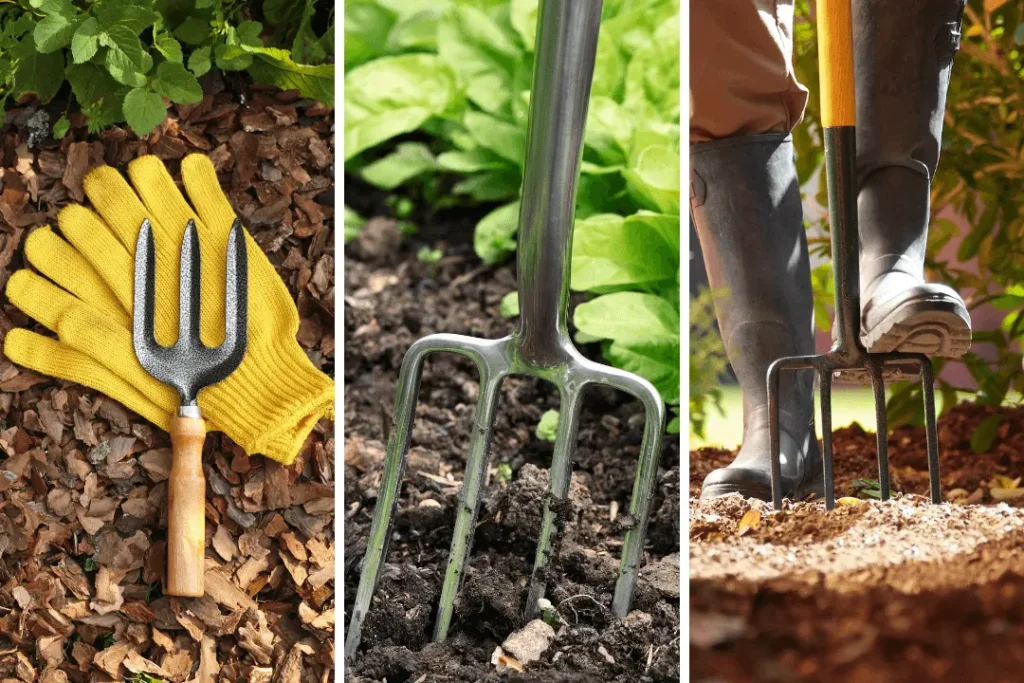
Gardening requires forks – commonly known by their other names of digging forks or spading forks – which come equipped with handles and sturdy tines (prongs). Used to lift, dig, loosen and turn over soil. They come fashioned out of various materials such as carbon steel, stainless steel and wood which provide various levels of toughness and ease of use.
For More Interesting and Informative Articles Check out: smartoolbuddy
1. Digging Fork
Digging forks are among the most widely-used garden forks, used both for general digging as well as soil preparation. Featuring four tines with flat tips designed to break up compacted soil while turning over gardens or mixing soil amendments.
3. Border Fork
Bordering forks are lighter and smaller than digging forks, making them suitable for use in tight spaces like flowerbeds or rows of closely spaced plants. Designed with shorter tines and handles to provide greater maneuverability while not compromising strength, bordering forks provide the ideal way to border these smaller spaces.
4. Compost Fork
Compost forks are specially-made to handle soil and compost efficiently and effortlessly, without creating lumps in loose materials. Their multiple tines – up to eight in number – allow them to effortlessly turn over light materials without creating unwanted lumps.
5. Potato Fork
Also referred to as roots forks, these forks for potatoes can help harvest root crops such as carrots, potatoes and beets safely without damaging them. Their wide flat tines allow them to gently lift crops without damaging their plants.
6. Manure Fork
Manure forks feature several thin, closely spaced tines designed to scoop and spread straw, manure and other loose materials in stables, barns or gardens for spreading fertilizers or mulch. They’re often employed in stables but they’re just as useful when spreading manure or mulch on lawns or flowerbeds.
Hand forks are handheld instruments used for specific tasks like weeding, aerating soil and transplanting seeds. With at least three or four tines on its tines, hand forks provide precise solutions in flower beds and containers.
In Detailed Comparison of Garden Fork Types
| Type | Primary Use | Tine Design | Best For |
| Digging Fork | General-purpose digging | Four flat tines | Breaking up soil, turning beds |
| Border Fork | Working in confined spaces | Shorter, narrower tines | Flower beds, tight spaces |
| Compost Fork | Handling compost and mulch | Multiple thin, curved tines | Turning loose materials |
| Potato Fork | Harvesting root crops | Broad, flat tines | Lifting potatoes, carrots |
| Manure Fork | Handling manure and straw | Thin, closely spaced tines | Scooping loose materials |
| Hand Fork | Precise gardening tasks | Three or four short tines | Weeding, aerating, transplanting |
Comparison of Garden Fork Types, Primary Use, Tine Design and Best Application: Digging Fork is best used for general-purpose digging with four flat tines designed to turn, break up soil and turn beds; border Fork works in tight spaces by offering shorter tines which make for quicker turning action when turning over beds, making gardening more efficient or just working in tighter spots like flowerbeds or tight spaces.
Selecting The Right Garden Fork
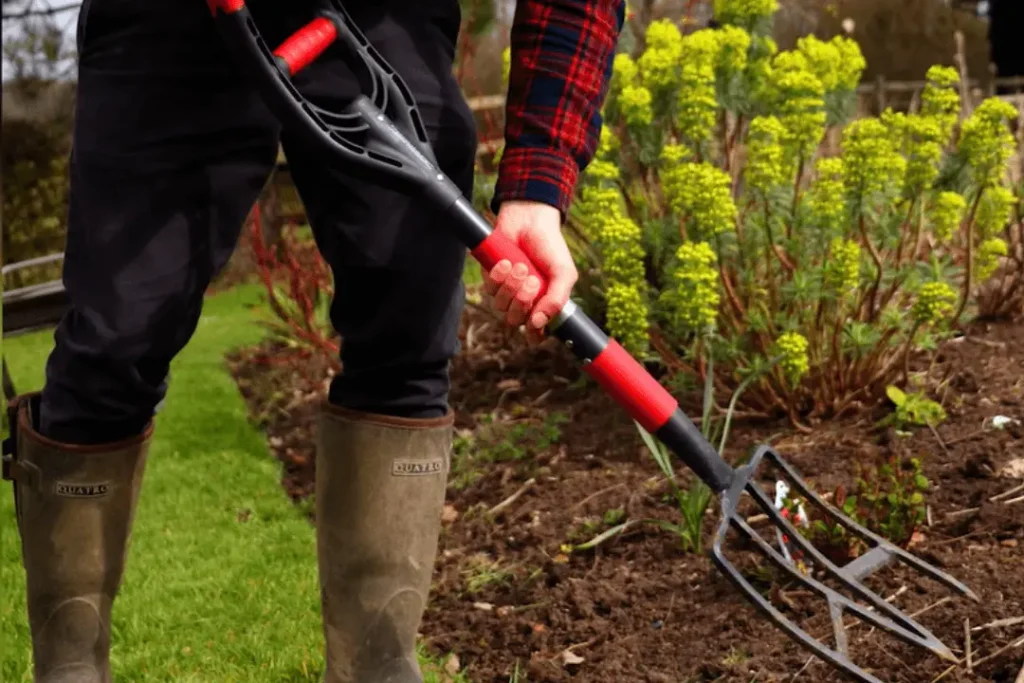
Choosing the right garden fork depends on your specific gardening needs. Consider the following factors when selecting a garden fork:
Material
- Stainless Steel: Stainless Steel is highly resistant to corrosion and rust, durable, easily cleaned, and easy to maintain.
- Carbon Steel: Carbon Steel: Durable but susceptible to rust if neglected
- Wooden Handles: Wooden Handles are comfortable but require regular care to prevent splintering of their wood material
Tine Design
- Flat Tines: flat Tines work great for digging or turning over soil
- Curved Tines: Better for lifting and moving loose materials.
- Wide Spacing: Curved Tine can lift loose material effectively and has wider spacing for lifting root crops
- Close Spacing: Close spacing is ideal for spreading and scooping loose materials
Handle Length
- Long Handles: Long handles provide greater leverage, helping reduce arm and back strain
- Short Handles: while short handles offer more control and maneuverability in tight spaces.
How To Effectively Use Garden Forks
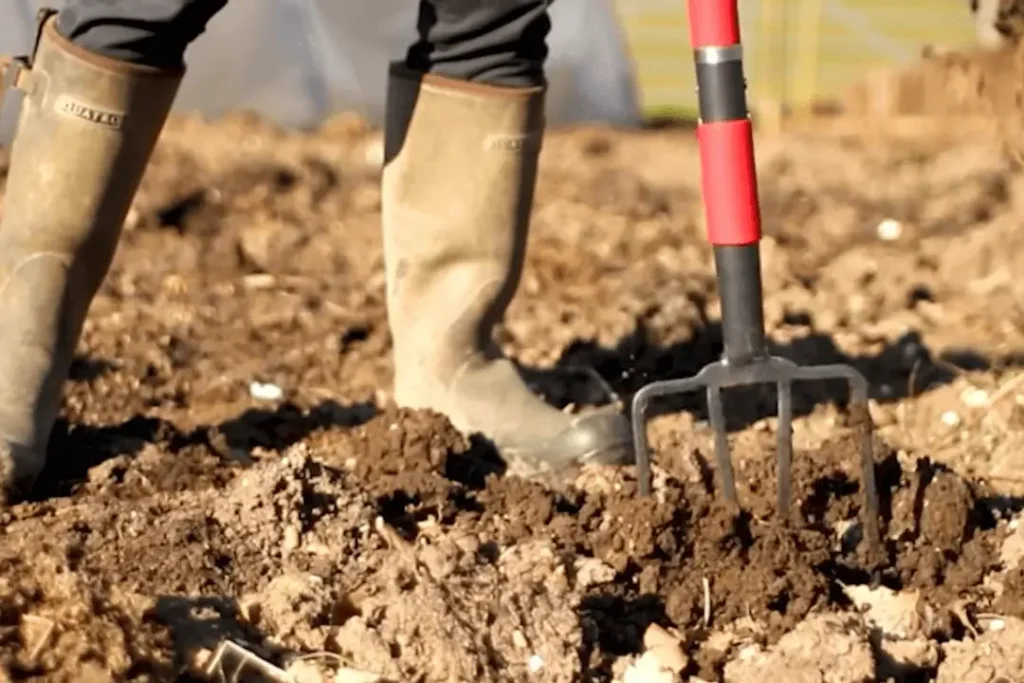
1. Digging and Loosening Soil
To use a fork effectively when digging, set its tines against the soil surface and press with your foot to dig inwards into it. Next, move it in a circular motion in order to loosen and then lift and move around it before raising again to move around it further.
2. Aerating Soil
Use tines from a fork to puncture regular holes into soil, increasing air circulation as well as water infiltration and absorption by plants and humans alike. This increases air exchange as well as infiltration rates for nutrients into the system.
3. Mixing Soil Amendments
Spread compost, manure or other amendments onto the surface of the soil using a garden fork to distribute and mix evenly across its surface. Rotate as well as mix your garden fork through to ensure all amendments have been evenly dispersed throughout.
4. Collecting Root Crops
To harvest root crops, gently move the potato fork tines over the soil around them so as to not damage any plants and then remove them from loose soil.
5. Handling Compost and Mulch
Use the compost fork to turn and lift compost piles, disperse mulch evenly across garden beds, and turn over compost piles without creating lumps of loose materials. Its thin and curved tines make this task straightforward.
Maintenance Tips for Garden Forks
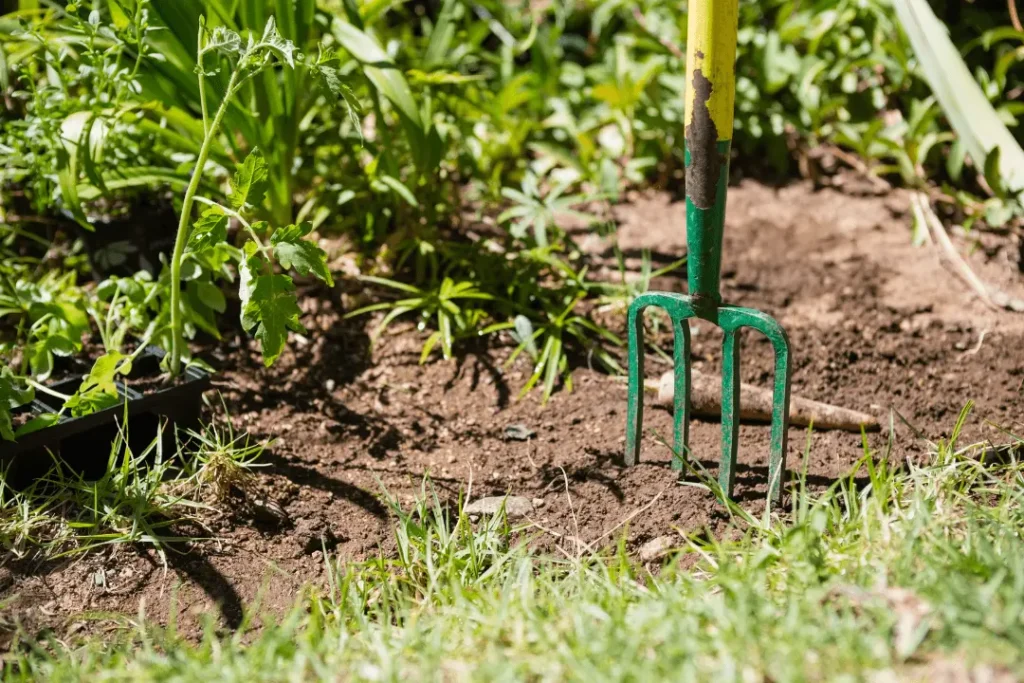
Proper care of garden forks will extend their useful life and ensure they continue being effective tools in your garden.
- Cleaning
After each use, ensure you carefully rinse both tines and handle of your gardening fork to get rid of dirt and other particles that accumulate over time. Use water and a broom for optimal cleaning results, then dry completely to avoid rust.
- Sharpening
Regular sharpening of garden fork tines will maximize their performance and extend their effectiveness. Use a sharpening stone or file to ensure the edges stay sharp.
- Store Garden Forks
It is best to store garden forks in an airtight, dry location to prevent corrosion and handle damage from happening over time. Hanging or placing them on an instrument rack are both great ways of keeping them working in top condition.
Conclusion
Its Garden forks can be utilized in many different ways and are essential tools for all gardeners. By understanding the various kinds of garden forks available and their uses, it will be easier for you to select and maintain equipment tailored specifically for your gardening requirements. When used and maintained properly, garden forks can make gardening even more enjoyable and productive – choose high-quality forks to ensure long term service from them!
Frequently Asked Questions on Types of Garden Forks
What is another name for a garden fork?
A different term for the garden fork is digging fork.
What is a gardening fork?
A gardening fork comes with a device equipped with a handle and robust tines. It is utilized to dig, turn and loosening soil in the garden.
What is the difference between a pitch fork and a garden fork?
A pitch fork is a tool with large, thin tines. It can be used for moving things that are loose, such as hay. A garden fork comes with small, hefty tines. It is utilized for digging and turning soil.
How to use garden fork?
1. Position The position is: stand and place the fork of your garden in the front of you.
2. Insert Inject the tines into the earth by using your feet.
3. Lift Reverse the handle in order to raise it and rotate the soil.
5. break up Make a shake with the fork in order to break soil clumps.
6. Repeat Then move to the next area to repeat this process till the entire area is completed.
Also Read:
How to Sharpen Garden Tools: Say Goodbye to Dull Blades

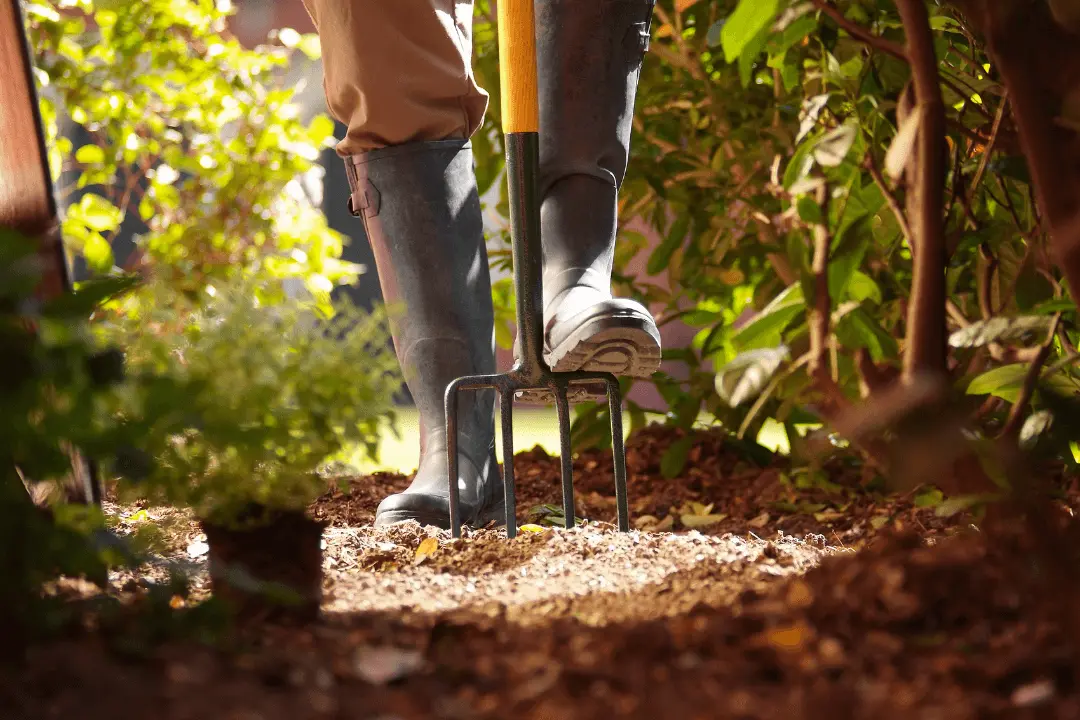
Related Blogs
The Top 10 Best Litter Box for Multiple Cats
5 Best Dry Cat Food for Indoor Cats 2024
Affordable Bluetooth Projector for Gaming: The Best in 2024
The Best Soundbar for Music and Movies for Home Threaters
Stay Powered Up: The Best Portable Charger for iPhone 15 in 2024
The iPhone 15 Pro Max New Features: Comprehensive Features
Liquid Screen Protector vs Tempered Glass: Which is better in 2024
What is a Monkey Wrench: Complete Details
Guide to Cleaning Your Gatorade Bottle The Proper Way
How To Sharpen Garden Hoe: Real Guide to the problem
How to Use a Tack Hammer Nail it Every Time
Easy Ways on How to Clean Garden Tools at Home
Changing a Garden Cart Tire: Expert Hacks That Will Save You from $200+ in Repairs
How to Whisk Eggs: Easy Manual Techniques
Garden Fork Vs Pitchfork: Deciding Which Tool Will Meet Your Garden Needs
Conquering the Greens: How to Rake Artificial Grass
How Deep To Plant Daffodil Bulbs? A Simple Guide
How to Pick the Best Shovel for Digging in 2024
The best time to power rake your lawn
Why Your Kitchen Isn’t Complete Without an Acacia Cutting Board
How to Replace Trimmer Line in Bump Feed: Step-by-Step Guide
Perfect Make Matcha Without Whisk: The Ultimate Guide
10 Ways to Remove Snow from Driveway Without a Shovel: Innovative Snow Removal
The Ultimate Guide: How Many Wheelbarrows of Sand Per Bag of Cement
Don’t Make This Silly Mistake with Your 5 Uses of Garden Fork
Is a Spade and a Shovel the Same? Discover the Differences Here
Transform Your Garden with Stunning Garden Stake Ideas You’ll Love
The Best Home Gym Equipment you can get in 2024
The Best Home Gym Setups for Small Spaces
Shoot Like a Pro: The Best iPhone Filmmaking Kit
Are Bone Conduction Headphones Safe?